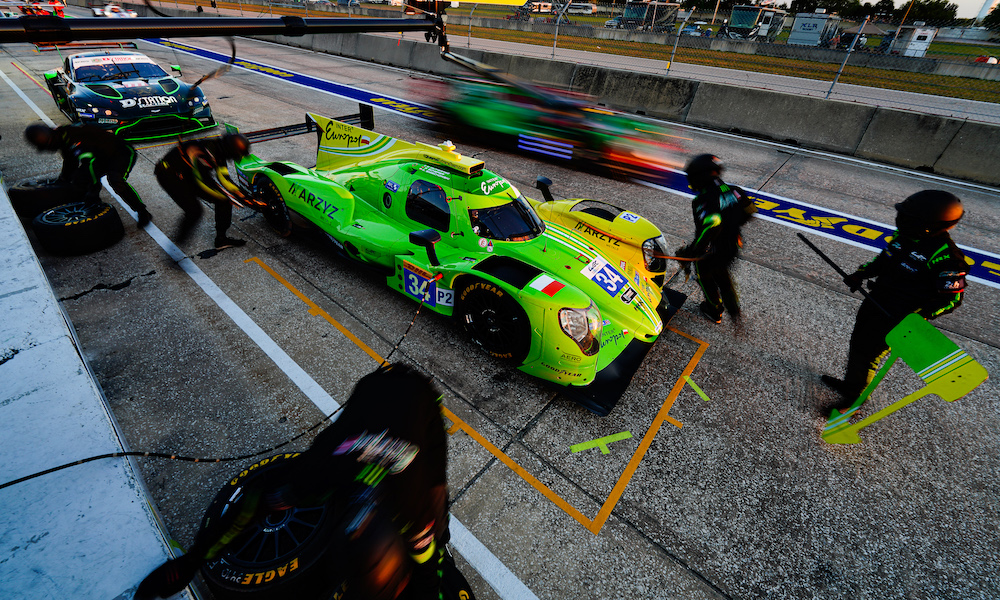The FIA World Endurance Championship is set to close the pit lane during Full Course Yellow periods in an expected sporting regulation change for the 2023 season.
Sportscar365 understands that the series is planning to prohibit cars from entering the pits during an FCY, which is a speed-restricted period used in the event of an accident or debris on the track.
When an FCY is called, drivers must reduce their speed to 80 km/h (49.7 mph) and refrain from overtaking. Unlike a safety car period, the gaps between cars are not reset.
The current regulations state that “the pit lane entry and exit remain open and cars are free to pit” however this option is set to be closed next year in the WEC and the European Le Mans Series. It is understood that the pits will remain open during slow zone periods at the 24 Hours of Le Mans.
It is unclear why the change is being made, with series organizers the FIA and ACO unwilling to comment on a regulation update that has not yet been ratified or published.
But several team members and drivers have questioned the expected tweak, with many suggesting that closing the pits under an FCY would likely remove strategy options.
Under the current rules, teams can gain an advantage by pitting their cars during an FCY as the rest of the field is traveling at the 80 km/h limit rather than full speed.
“The Full Course Yellow is an opportunity to gain or lose and is a big part of endurance racing,” TF Sport team principal Tom Ferrier told Sportscar365.
“Now you’re running to the fuel light and it’s a ‘green’ stint all the time. It’s a bit sad, but they have reasons why they want to do it. I don’t think many people are keen on it.”
Ferrari driver Alessandro Pier Guidi added that removing a strategy option such as the ability to pit under FCY conditions could detract excitement from the races.
“Sometimes it’s nice to keep it a bit open,” the Italian said.
“At least someone can invent something in terms of strategy. We want to have the race spectacular and fun to watch.
“But if you put some strict rules… at Le Mans [in 2018] they [controlled] the fuel and number of laps [for a stint]. Everything was so complicated and close, too much regulated, that it was difficult to invent something and it became boring.
“In a Full Course Yellow, the key factor is to try and save fuel and go one lap longer, get the FCY and gain the advantage. If not like this, you just win on pure performance which I think is something more related to F1 than the endurance world.”
The WEC introduced Full Course Yellows in 2014 with the purpose of reducing the number of safety car procedures in races.
The ability to pit under an FCY came under scrutiny midway through the 2016 season after instances of cars gaining an advantage by stopping at the right moment.
Pitting under an FCY has continued to be part of the game since then, with teams running the risk of losing a large amount of time if they can’t reach the pits before the yellow flags are withdrawn.
The race director often leaves the FCY active for two laps to ensure that the pit lane does not become flooded with cars at the first opportunity.
“The only proof that these changes work is the application, and on that basis, we’re just going to have to wait and see,” said GR Racing team principal Owen Daley.
“Will it be another change like driver assistance that we’re going to go back on, or will there be more safety cars and get more exciting for people to watch?”



























